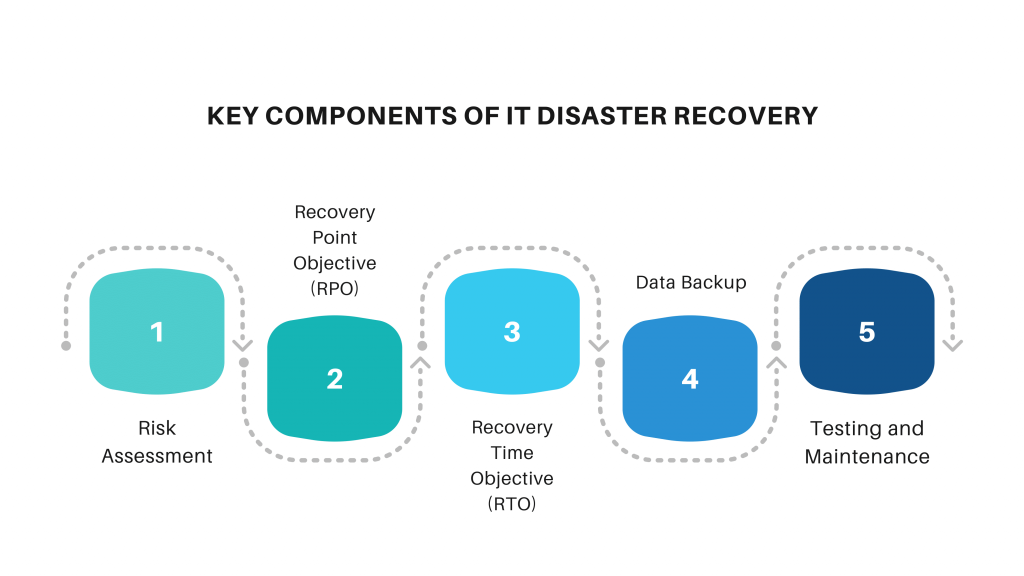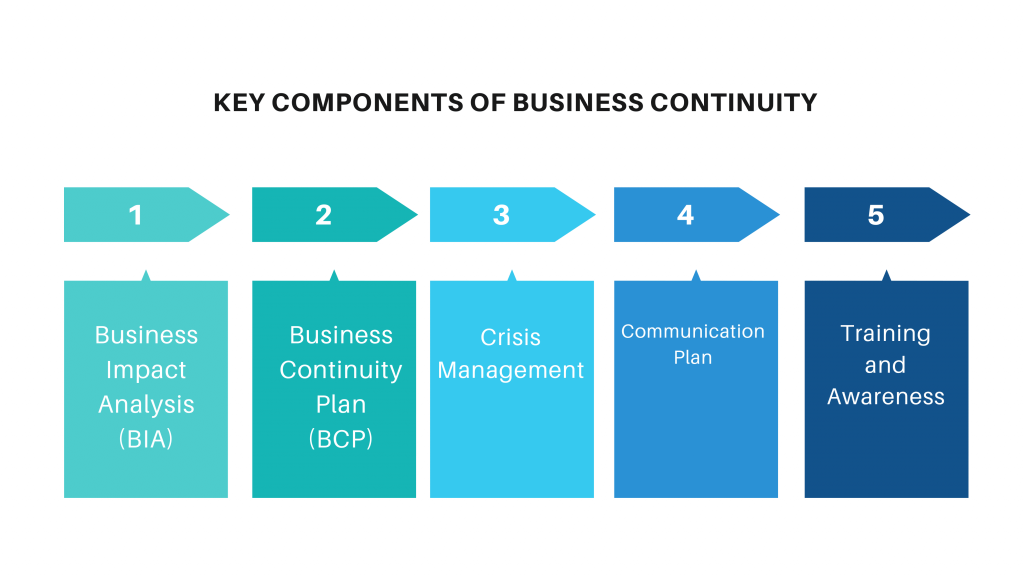IT disaster recovery and business continuity planning are crucial in today’s digital landscape, where businesses heavily rely on IT systems for their daily operations. The importance of these practices cannot be overstated, as disruptions—whether caused by natural disasters, cyber-attacks, or human error—can have severe consequences. This article provides insights into the significance of IT disaster recovery and business continuity planning, highlighting their benefits and exploring future trends.
The Importance of IT Disaster Recovery
IT disaster recovery (DR) refers to the strategies and processes an organization implements to recover and restore IT systems, data, and operations after a disruptive event. Effective IT disaster recovery ensures that businesses can quickly resume critical functions, minimizing downtime and data loss.

Key Components of IT Disaster Recovery
- 1. Risk Assessment: Identifying potential risks and vulnerabilities to the IT infrastructure.
- 2. Recovery Point Objective (RPO): Determining the maximum acceptable amount of data loss measured in time.
- 3. Recovery Time Objective (RTO): Establishing the target time within which systems must be restored after a disruption.
- 4. Data Backup: Regularly backing up data to secure locations to prevent loss.
- 5. Testing and Maintenance: Regularly testing disaster recovery plans to ensure their effectiveness and making necessary updates.
The Importance of Business Continuity
Business continuity (BC) refers to the overall strategy an organization employs to ensure that it can continue operating during and after a disaster. While IT disaster recovery focuses specifically on IT systems, business continuity encompasses all aspects of a business, including personnel, facilities, and communication.

Key Components of Business Continuity
- 1. Business Impact Analysis (BIA): Assessing the effects of disruptions on different business functions.
- 2. Business Continuity Plan (BCP): Developing a comprehensive plan that outlines procedures for maintaining and restoring business operations.
- 3. Crisis Management: Establishing a team to manage the response to a crisis and coordinate recovery efforts.
- 4. Communication Plan: Ensuring effective communication with employees, customers, and stakeholders during a disruption.
- 5. Training and Awareness: Educating employees about their roles in the business continuity plan.
Benefits of IT Disaster Recovery and Business Continuity Planning
Minimizing Downtime
One of the primary benefits of having robust IT disaster recovery and business continuity plans is minimizing downtime. By quickly restoring critical IT systems and business functions, organizations can maintain productivity and service delivery, reducing the financial and reputational impact of disruptions.

Protecting Data
Data is a valuable asset for any organization. Effective disaster recovery plans ensure that data is regularly backed up and can be restored quickly, preventing data loss and ensuring business continuity.

Enhancing Customer Trust
Customers expect businesses to be reliable and resilient. Demonstrating a commitment to business continuity and disaster recovery can enhance customer trust and loyalty, as it shows that the organization is prepared to handle unexpected events.

Compliance and Risk Management
Many industries have regulatory requirements related to data protection and business continuity. Implementing disaster recovery and business continuity plans helps organizations comply with these regulations and manage risks effectively.

Case Studies
A Large Financial Institution
A major financial institution implemented a comprehensive IT disaster recovery plan that included off-site data backups and regular testing. When a natural disaster caused extensive damage to their primary data center, they were able to restore operations within hours, minimizing downtime and customer impact.

A Healthcare Provider
A healthcare provider developed a business continuity plan that included detailed procedures for maintaining patient care during IT disruptions. When a cyber-attack targeted their systems, the organization was able to continue providing critical services without interruption, thanks to their well-prepared continuity plan.

Future Trends in IT Disaster Recovery and Business Continuity
Cloud-Based Solutions
The adoption of cloud-based disaster recovery solutions is on the rise. Cloud DR provides scalable, cost-effective, and flexible options for data backup and system restoration, enabling organizations to recover quickly from disruptions.
Advanced Analytics and AI
Future IT disaster recovery and business continuity plans will likely incorporate advanced analytics and artificial intelligence (AI) to predict and mitigate potential risks. AI can help identify vulnerabilities, optimize recovery processes, and provide real-time insights during a crisis.
Cybersecurity Integration
As cyber threats become more sophisticated, integrating cybersecurity measures into disaster recovery and business continuity plans will be essential. This includes proactive threat detection, incident response, and recovery strategies to protect against data breaches and cyber-attacks.
Conclusion
IT disaster recovery and business continuity planning are critical components of an organization’s resilience strategy. By understanding the importance of these practices, organizations can minimize downtime, protect data, enhance customer trust, and comply with regulations. As technology evolves, embracing future trends such as cloud-based solutions, AI, and integrated cybersecurity will further strengthen the ability to recover from disruptions and ensure business continuity. Investing in robust IT disaster recovery and business continuity plans is not just a safeguard—it’s a strategic imperative for long-term success.













